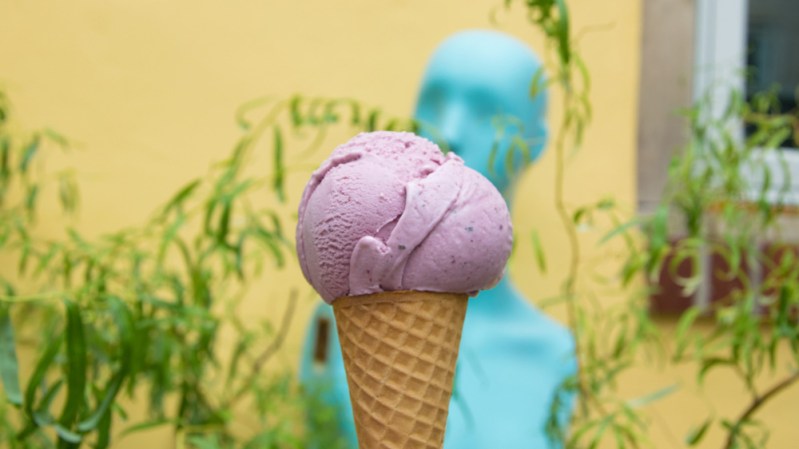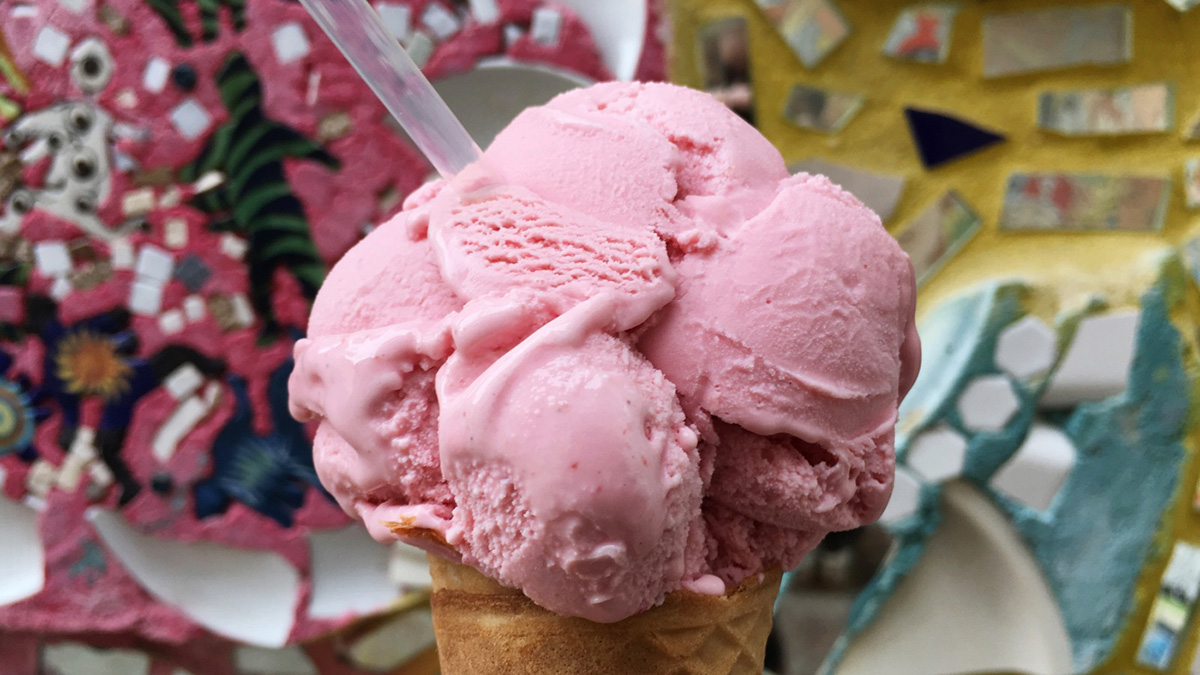
When a professional drummer is bored in the kitchen and tries making Earl Grey sriracha ice cream, how does it taste?
For Pete Angevine: delectable. Angevine is the owner of Little Baby’s Ice Cream in Philadelphia, a spot infamous for bizarre ice cream flavors like pizza, sushi, tomato soup and grilled cheese, ramen, Irish potato, cucumber dill, apple pie and cheddar cheese, absinthe poppy, everything bagel, and oyster.

Yep, oyster ice cream. (Which actually used to be popular around the revolutionary war when ice cream was imported from France to Philly.)
Angevine started Little Baby’s Ice Cream in 2011 with two friends. “None of us [came] from a food or business background,” he tells The Manual. “We were all part of the music, arts, and culture world in Philadelphia.” Before ice cream was a business, it was a hobby. “We were thinking of ice cream as a blank canvas,” Angevine says. “It’s a universal equalizer that brings people together and makes them happy, and thus a perfect opportunity to gently welcome people to be open-minded and curious.”
The first flavor Angevine created was Earl Grey sriracha.
“I squirted some hot sauce, woke up the next morning to taste it, and it made me perk up … today it’s one of our staple flavors.”
“It was a little bit of a self-prank. I was in my kitchen at 1 a.m. making ice cream with whatever I had available. Earl Grey is a common ice cream flavor but I thought, ‘What’s something funny I can add?’ I squirted some hot sauce, woke up the next morning to taste it, and it made me perk up … today it’s one of our staple flavors.”
Most of the patrons at Little Baby’s have a similar #woke experience with one of the shop’s mind-bending flavors. Visitors are welcome to try any and all ice creams before deciding on their scoop. Half of the time, the visitor has some “strange transformational experience” and suddenly loves a jerk chicken- or ranch-flavored ice cream (both actual flavors made by Little Baby’s).
1st @LittleBabysIC of the szn. This one’s chock full of those Biscoff airline cookies 👍 pic.twitter.com/LDISekHvjP
— Kate (@katebarstool) May 1, 2018
Many of the bizarre ice creams are more savory than sweet, however, all Little Baby’s batches use a base that includes cane sugar. Fun fact: Little Baby’s makes 16 percent butterfat, grass-fed dairy, “Philly-style” ice cream with no eggs, as well as nondairy ice cream made with coconut cream.
Apart from ranch and pizza, Little Baby’s does make more traditional ice cream flavors like bourbon vanilla, chocolate churro, pumpkin-spiced latte doughnut, and coffee cake — still completely imaginative, but closer to what you might be looking for from a dessert.
The most surprising and bizarre flavor that hit it big with customers was the everything bagel. “It really does kind of taste like an everything bagel and is in fact quite good,” Angevine laughs. “It’s a surreal experience.”
Last week, Little Baby’s launched a new flavor, watermelon chocolate chip, made with fresh, local watermelons. In fact, every time you step into Little Baby’s, the menu will feature seasonal produce. Throughout the summer, look for blueberry ginger and peach granola; in the fall, scoop up sweet potato burnt marshmallow, cranberry sage, and pumpkin curry.
The only one that ended up being too repulsive was Champagne and Lucky Charms.
You might think the experimental failure-to-success ratio is tipped to the former, but Angevine says they don’t have a long track record of failed flavors. The only one that ended up being too repulsive was Champagne and Lucky Charms.
Right about now you’re probably ready to eat ice cream and have a near-psychedelic experience. You can visit any if Little Baby’s three Philly locations — a fourth is opening soon! — or visit a scoop shop in Baltimore or Washington DC. Some pints are sold throughout the mid-Atlantic as well.
So … which flavor will you try?






